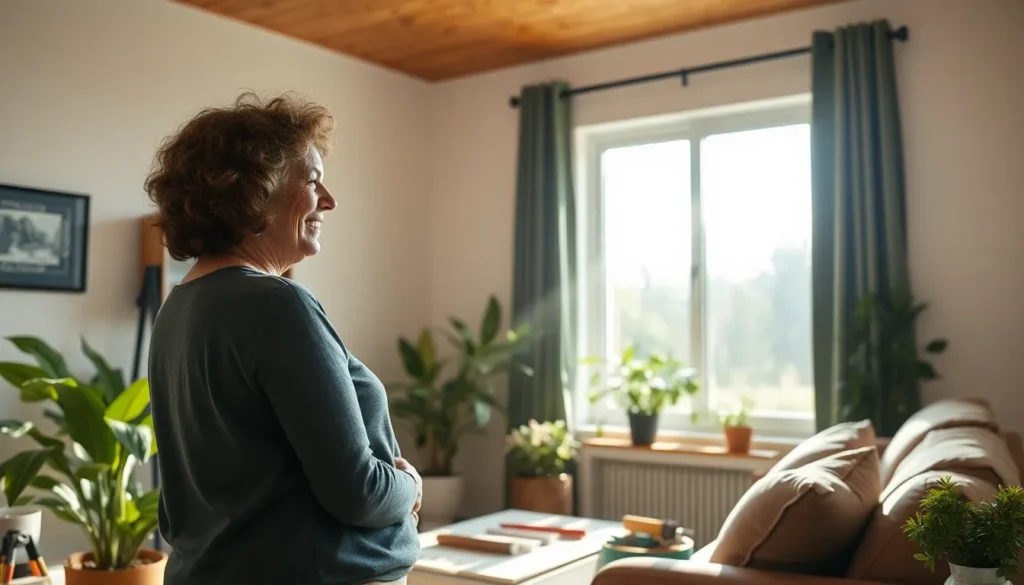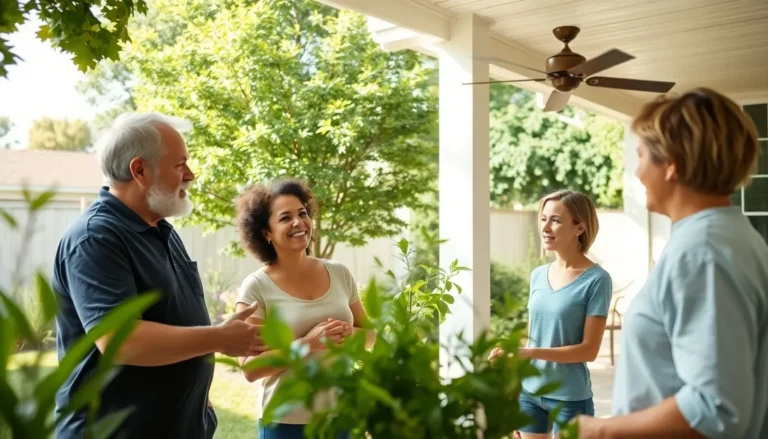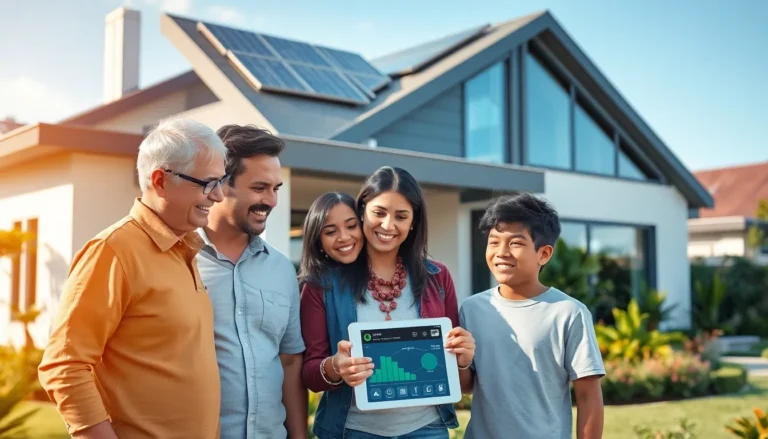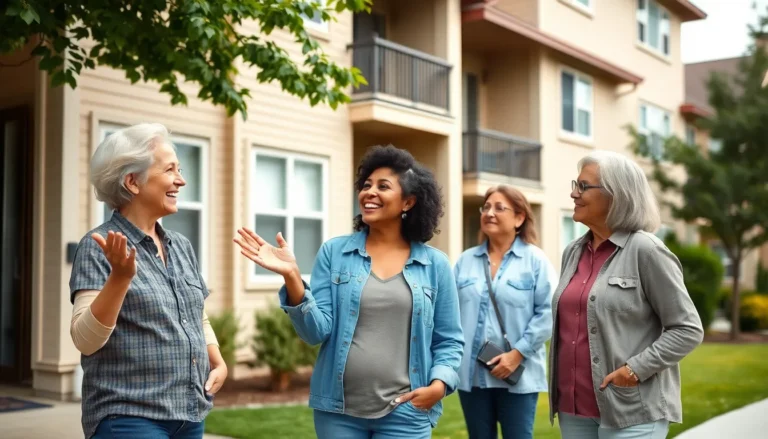In a world where energy bills can leave wallets feeling lighter than a feather, energy-saving retrofits are the superheroes we didn’t know we needed. Imagine slashing those pesky utility costs while also giving Mother Earth a high-five. These upgrades not only boost efficiency but can also make homes cozier than a cat in a sunbeam.
Whether it’s swapping out old windows for energy-efficient ones or upgrading to smart thermostats that know you better than your best friend, the options are endless. Retrofits can transform a home into an energy-saving fortress, all while keeping the comfort levels on point. So why not dive into the world of energy-saving retrofits and turn that energy bill frown upside down?
Table of Contents
ToggleOverview of Energy-Saving Retrofit Options
Energy-saving retrofits offer various choices that help homeowners reduce energy consumption and decrease costs. Replacing old windows with energy-efficient models can significantly improve insulation and comfort. Installing smart thermostats allows for better control of heating and cooling systems, optimizing energy use throughout the day. Upgrading to high-efficiency HVAC systems can also lead to lower energy bills while enhancing indoor air quality.
Sealing air leaks in walls, roofs, and foundations helps maintain consistent indoor temperatures, preventing excessive energy loss. Adding insulation to attics and crawlspaces is another effective retrofit strategy that enhances overall home efficiency. Choosing Energy Star rated appliances ensures that devices consume less energy, offering substantial savings over time.
Incorporating LED lighting not only reduces electricity usage but also lasts much longer than traditional bulbs, leading to further cost savings. Installing solar panels presents a long-term solution that harnesses renewable energy, potentially generating utility credits through excess production. Utilizing programmable power strips can eliminate phantom loads, as devices in standby mode still draw power.
Additionally, investing in weatherization techniques such as storm doors and window treatments can offer improved thermal performance. Engaging with energy audits can pinpoint specific areas needing retrofitting, ensuring targeted and effective upgrades. By exploring these retrofit options, homeowners can significantly enhance energy efficiency and lower monthly expenses.
Benefits of Energy-Saving Retrofits
Energy-saving retrofits significantly enhance home efficiency and comfort. They offer both financial and environmental benefits that appeal to homeowners.
Cost Savings
Cost savings emerge as a primary advantage of energy-saving retrofits. Homeowners experience reduced monthly utility bills after implementing energy-efficient upgrades. In fact, integrating high-efficiency HVAC systems can lead to savings of 20-50% on heating and cooling expenses. Replacing old windows with energy-efficient models contributes to added savings by minimizing heat loss. Smart thermostats provide further reduction by optimizing heating and cooling schedules, bringing additional savings of 10-30%. Overall, these retrofits pay for themselves over time, making them a wise investment for homeowners.
Environmental Impact
Environmental impact serves as another compelling reason for energy-saving retrofits. Retrofits reduce greenhouse gas emissions by decreasing overall energy consumption. Upgrading to Energy Star rated appliances can eliminate up to 30% more energy use compared to standard models, thus minimizing their ecological footprint. Switching to LED lighting not only consumes less energy but also lasts significantly longer than traditional bulbs. Installing solar panels generates renewable energy, further decreasing reliance on fossil fuels. Energy-saving retrofits not only promote sustainability but also contribute to a healthier planet for future generations.
Types of Energy-Saving Retrofit Options
Various energy-saving retrofit options exist to enhance home efficiency and reduce utility costs. These options range from insulation improvements to advanced HVAC upgrades.
Insulation Improvements
Enhancing insulation significantly improves a home’s energy efficiency. Upgrading attic and wall insulation reduces heat loss during winter and keeps interiors cool in summer. Common materials include spray foam, fiberglass batts, and cellulose. Investing in proper insulation can lead to a 10-50% decrease in energy costs, according to the U.S. Department of Energy. Sealing gaps around doors and windows also contributes to better thermal performance, preventing air leaks that compromise comfort.
HVAC Upgrades
Upgrading to high-efficiency HVAC systems plays a vital role in lowering energy bills. Modern systems offer variable speed compressors and enhanced thermostatic controls for more precise temperature regulation. Replacing old furnaces or air conditioners can yield energy savings of 20-50%. Smart thermostats allow homeowners to optimize settings according to schedules, maximizing efficiency. Regular maintenance, including filter changes and system checks, ensures optimal performance, further enhancing energy savings.
Lighting Solutions
Switching to LED lights serves as a cost-effective lighting solution. LED bulbs consume up to 75% less energy than traditional incandescent bulbs while lasting significantly longer. Incorporating lighting controls, such as dimmers and motion sensors, adds to energy efficiency. With proper implementation, LED lighting can reduce home energy expenses by approximately 25%. Natural lighting strategies, such as maximizing window placement and using skylights, offer additional energy savings.
Window Replacements
Replacing old windows with energy-efficient models greatly impacts energy conservation. Double or triple-pane windows significantly reduce heat transfer, making homes more comfortable. Low-E coatings enhance insulation without sacrificing natural light. Homeowners experience energy savings of 10-25% when switching to Energy Star rated windows. Proper installation is crucial to maximizing benefits, ensuring a tight seal that prevents drafts and improves thermal performance.
Considerations When Choosing Retrofit Options
Choosing the right retrofit options requires careful consideration of several factors that directly impact effectiveness and efficiency.
Building Type and Age
Building type and age significantly influence retrofit decisions. Older structures may benefit from insulation improvements that address specific gaps in energy performance. Residential homes, for instance, often require different strategies compared to commercial buildings. Historic homes might involve restrictions on window replacements, prompting homeowners to prioritize energy-efficient techniques compatible with original designs. Under certain conditions, newer buildings can implement modern technologies like smart thermostats and high-efficiency HVAC systems more seamlessly, maximizing energy savings quickly. Evaluating building characteristics ensures tailored approaches yield optimal results.
Budget and Funding
Budget and funding play crucial roles in selecting retrofit options. Many homeowners face financial constraints that limit their ability to invest in extensive upgrades. Keeping costs in check requires understanding potential savings from energy-efficient improvements, which typically range from 20-50% for heating and cooling. Various financing options are available, including rebates, tax incentives, and energy efficiency loans that reduce upfront expenses. Prioritization of cost-effective upgrades ensures greater savings over time. Engaging in thorough financial planning helps determine the most suitable retrofit options, balancing immediate expenses with long-term benefits.
Conclusion
Energy-saving retrofits present a valuable opportunity for homeowners to enhance comfort while significantly reducing utility costs. By investing in modern technologies and efficient systems, individuals can not only save money but also contribute to environmental sustainability.
The variety of available options—from insulation improvements to smart thermostats—ensures that there’s a solution for every home. With careful planning and consideration of specific needs, homeowners can make informed decisions that lead to lasting benefits.
Exploring financing options further empowers homeowners to take the leap toward a more energy-efficient future. Embracing these retrofits is a step toward creating a healthier living environment and a more sustainable planet.











